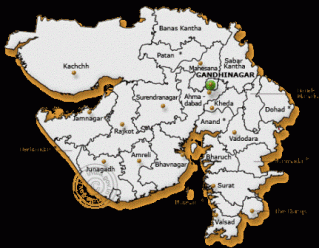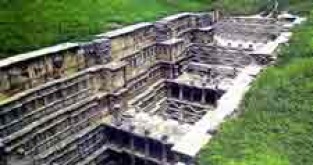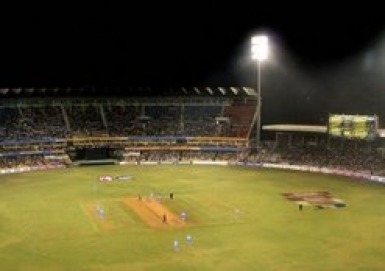
HOME

Gujrat is an ancient district of Pakistan located in between two famous rivers, i.e., River Jehlum and River Chenab . Because of it’s proximity with the rivers the land is good for cultivation with rice and sugar cane as main crops. It is bounded on the North-East by Jammu and Kashmir , on the North-West by the River Jhelum which separates it from Jhelum district, on the East and South-East by the river Chenab, separating it from the districts of Gujranwala and Sialkot , and on the West by Mandi Bahauddin district. District Gujrat is spread over an area of 3,192 square kilometres.
Gujarat gets its name from "Gujjar Rashtra", the land of the Gujjars, a migrant tribe who came to India in the wake of the invading Huns in the 5th century. The history of Gujarat dates back to 2000 BC. It is also believed that Lord Krishna left Mathura to settle on the west coast of Saurashtra at Dwarka.logy Games
Archeology

Gujarat forms an area that housed the regions of the Indus Valley civilization and Harappan sites. Around 50 Harappan sites are found in Gujarat. Lothal, Rangpur, Amri, Lakhabaval, Rozdi etc. are some of these sites. This makes it an important territory that reveals the history of India. The Dravidian tribes were said to be the original inhabit ants of this region. Even before the Aryan occupation of Gujarat it is said to have had trade contracts with Sumer, the Persian Gulf in about 1000-750BC. Rock edicts in the Girnar hills indicate that Ashoka extended his domain into Gujarat. It was during the Mauryan rule that this region witnessed the influence of Buddhism. The Mauryans also promoted trade and helped in spread of its culture. In about 150BC the Bactarian Greeks under Meander is said to have instilled their rule. Till 40AD they are said to have had trade contracts with Rome. From about AD130-390 the Scythians ruled it. After 300AD the Guptas established their reign which lasted till 460AD. The Vallabhi established their sway in between (500-700AD). After the death of Harshvardhana, the Gujjars controlled it till 746AD. The Solankis ruled over Gujarat till 1143. Gujarat attained its greatest territorial extend under the Solanki dynasty, from the 9th century. Muhammud of Ghazni attacked Somnath in Gujarat leading to the downfall of the Solankis. The conquest of Ala-ud-din Khilji king of Delhi in 1288 also influenced the conditions in Gujarat. The Sultans of Delhi had their sway over Gujarat from 1298-1392AD. Ahmad Shah I, the first independent Muslim ruler of Gujarat founded Ahmadabad in 1411. Then the Mughals ruled for about 2 centuries till the Marathas terminated their rule in the mid 18th century. It was during the18th century that Gujarat was divided among number of chiefs. From 1803-1827 the British set up their administration. The British East India companies first head quarters in India was at Surat. It was later moved to Bombay. Finally in May1,1960, the state of Gujarat was formed from the north and west portions of Bombay state, the remainder being renamed the state of Maharashtra.
HISTORY OF GUJRAT

Located on the west coast of India, the state of Gujarat is one of the most industrialized states in India.Gujarat got its name from the tribe known as 'Gujjars', which inhabited the region in the 1st century A.D.The rich and eventful History of Gujarat is an interesting and captivating one.Excavations at various sites in Gujarat show signs of civilization in the region dating back to as early as 3000 to 1500 B.C. Gujarat represents the area that contained the regions of the Indus valley civilization and Harappan sites.The History of Gujarat mentions that around 50 Harappan sites were excavated in Gujarat.
The History of Gujarat in India also states that the British set up their administration in Gujarat from 18803-1827.The British East India Company's first headquarters was set up at Surat in Gujarat before being moved to Bombay.The British Raj started administering the state through local princely rulers.
Finally, it was in May 1, 1960, that the present state of Gujarat was formed by reorganizing the north and west portions of Bombay state, the remainder being renamed as Maharashtra state.
Today, Gujarat stands bordered by Pakistan and Rajasthan in the north east, Madhya Pradesh in the east,and Maharashtra and the Union territories of Diu, Daman, Dadra and Nagar Haveli in the south.The Arabian Sea borders the state both to the west and the south west.
SURAT IS DIAMOND CITY OF INDIA

The ancient Gujarati port city of Barygaza (Broach), on the Gulf of Cambay, was at the crossroads of trade routes to China,Persia, Greece, and Portugal, and was a major trading center since the time of Ptolemy (c. 90 AD - c. 168 AD) [9]. Mughal jewellery, gold, silver, textiles, coral, ivory, pearls and gemstones all passed through Barygaza, making it a mecca for artisans, carvers, and stone-cutters for over 1000 years.
To this day a substantial diamond cutting industry has grown up in the cities of Ahmedabad, Bhavnagar, Mumbai, Navasari,and Surat in Gujarat province on the central-western coast of India, where a workforce of around 800,000 people cut and polish 80% to 90% of the world's diamonds in a hodgepodge of 'cottage industry' style sweatshops and cutting houses.The average cutting-house employs 50 to 200+ workers. Labor costs in India are very low ($.60 to $1.00 per stone) when compared to the more industrialized diamond centers.In Mumbai alone, the diamond-cutting industry employs an estimated 100,000 workers.
Much of India's diamond trade is controlled by a handful of wealthy families, many with the common surnames of Jhavari,Mehta, and Shah. Most of the 'diamantaires' in Gujarat's polishing industry are Jain, and ancient Indian religion and philosophy dating back to the 8th century BCE.Surat, a city by the Gulf of Khambat (aka the Gulf of Cambay),is considered one of the hubs of the global diamond trade,and "the diamond city of India." The De Beers controlled Diamond Trading Company (DTC) has demonstrated Gujarat's power in the diamond-cutting arena by increasing its take of the DTC's 125 lucrative 'sightholder' contracts to nearly 50 in 2005.
THE SARDAR PATEL STADIUM BY NIGHT

Established: 1982
Capacity: 48,000
Floodlights: Yes
Ends: Adani Pavilion End, GMDC End
Home Team: Gujarat
Head Groundsman: Dhiraj Parsana
Test History: 8 Tests (3 home wins, 1 away win, 4 draws)
Tosses: 7 bat first (2 wins, 1 loss, four draws), 1 bowled first (1 loss)


